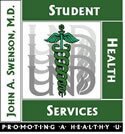|
Sprains & Strains
Sprains and strains are very common injuries. Sprains are usually caused by some sort of direct or indirect trauma; strains are the result of overuse of muscles and tendons.
A sprain is a stretch and/or tear of the ligament beyond the normal range of motion. Ligaments connect bone to bone, which stabilize and support the body's joints. Sprains may occur at any joint, but are most common in ankles, knees, wrists, and fingers. Symptoms include swelling, pain, bruising, and inflammation following the injury. It is also common to feel a tear or pop in the joint.
A strain is a twist, pull and/or tear of a muscle and/or tendon, which are the fibrous cords that attach muscles to bones. Signs of a strain include pain, muscle spasm, muscle weakness, swelling, inflammation, and cramping.
Mild sprains and strains can be treated at home using the R.I.C.E. (Rest-Ice-Compress-Elevate) method. Resting the injury, icing the affected joint, compression of the injury using an athletic wrap, and elevation of the injury. Using this method will help to minimize damage, as well as decrease swelling and pain. Mild sprains and strains do not need to be seen by a doctor but you should seek medical attention if you experience severe swelling and bruising and/or cannot bear weight.
Prevention
The best way to prevent sprains or strains is to keep yourself in good physical shape, so that your muscles, ligaments, and tendons are strong and flexible enough to resist trauma. To prevent recurring injury, ask your doctor for exercises designed to rehabilitate the muscles in the injured area. If you are overweight, ask about an appropriate diet and a general conditioning program.
Tips developed by the American Academy of Orthopedic Surgeons to help reduce your injury risk:
- Participate in a conditioning program to build muscle strength.
- Do stretching exercises daily.
- Always wear properly fitting shoes.
- Nourish your muscles by eating a well-balanced diet.
- Warm up before any sports activity, including practice.
- Use or wear protective equipment appropriate for that sport.
Make an appointment at Student Health Services if:
- The pain, swelling, or stiffness does not improve in two to three days.
- You feel a popping sensation when you move a sprained joint; this may indicate a serious injury that requires immediate medical treatment.
- You can't move or bear weight on an injured joint. You may have a broken bone.
- The bones in an injured joint don't seem to be aligned properly. The ligaments that hold the joint together may be badly torn, requiring surgical repair.
- An injured muscle does not move at all; it may have torn completely through and may require immediate medical attention.
- You have repeated sprains or strains, indicating a chronic weakness that should be evaluated by a physician.
- You have difficulty moving or walking after straining any back muscle.
Resource Links:
v National Institute of Arthritis and Musculoskeletal and Skin Disease. Questions and Answers About Sprains and Strains. (www.nih.gov/niams/healthinfo/strain_sprain.htm)
v LebanonHealth.Com. Sprains and Strains. (www.lebanonhealth.com/condi/505.htm)
v American Institute for Preventive Medicine's Health at Home. RICE. (www.mcare.org/healthathome/sprainsa.html)
 Back to Top 20 Health Issues Back to Top 20 Health Issues
|
|


